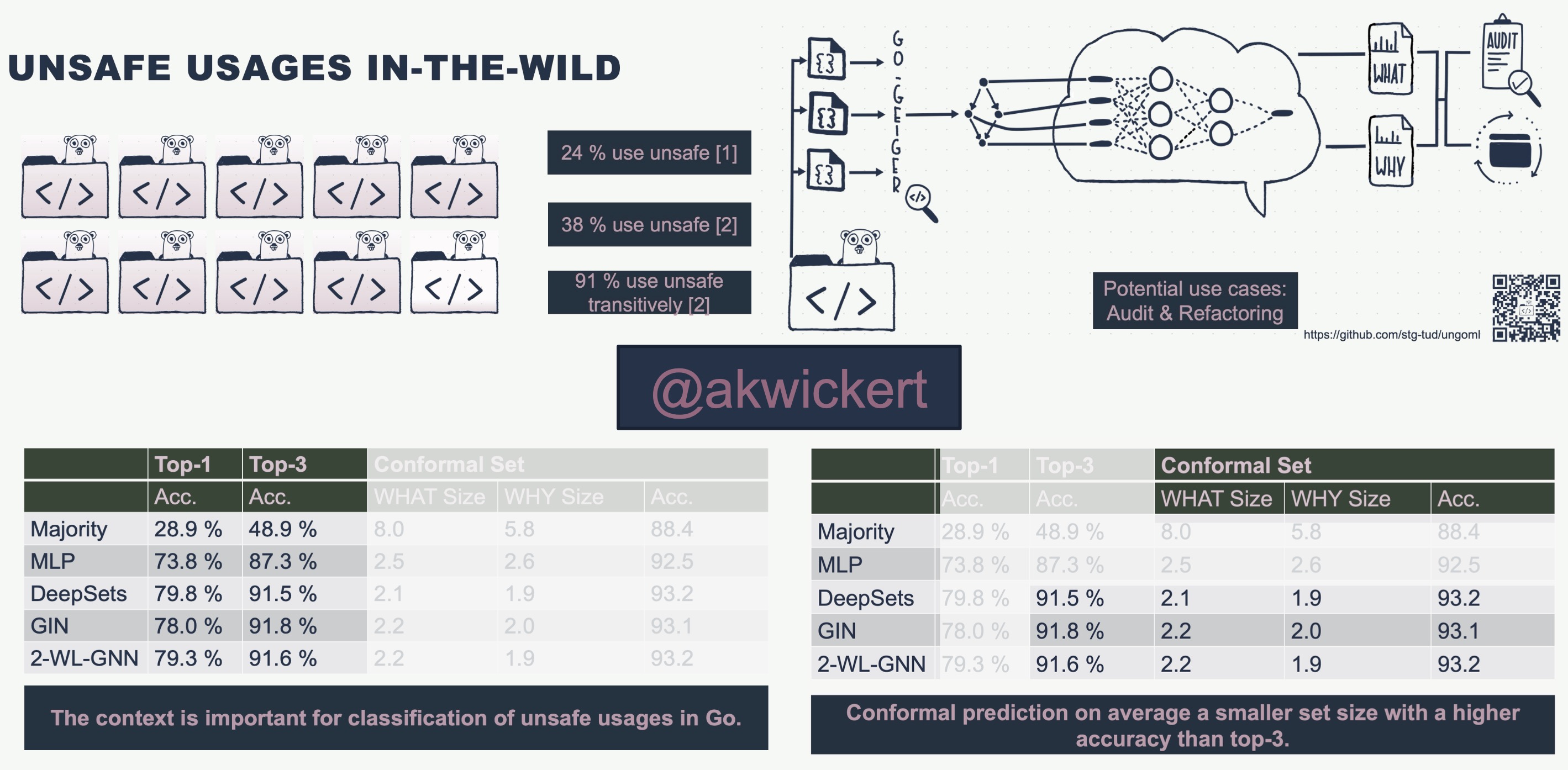
UNGOML: Automated Classification of unsafe Usages in Go
UNGOML, an automated classifier for Go’s unsafe package, uses deep learning to classify the purpose of unsafe usages. It achieves over 86% accuracy, aiding in tasks like refactoring and security audits by identifying what is done with the unsafe package and why.